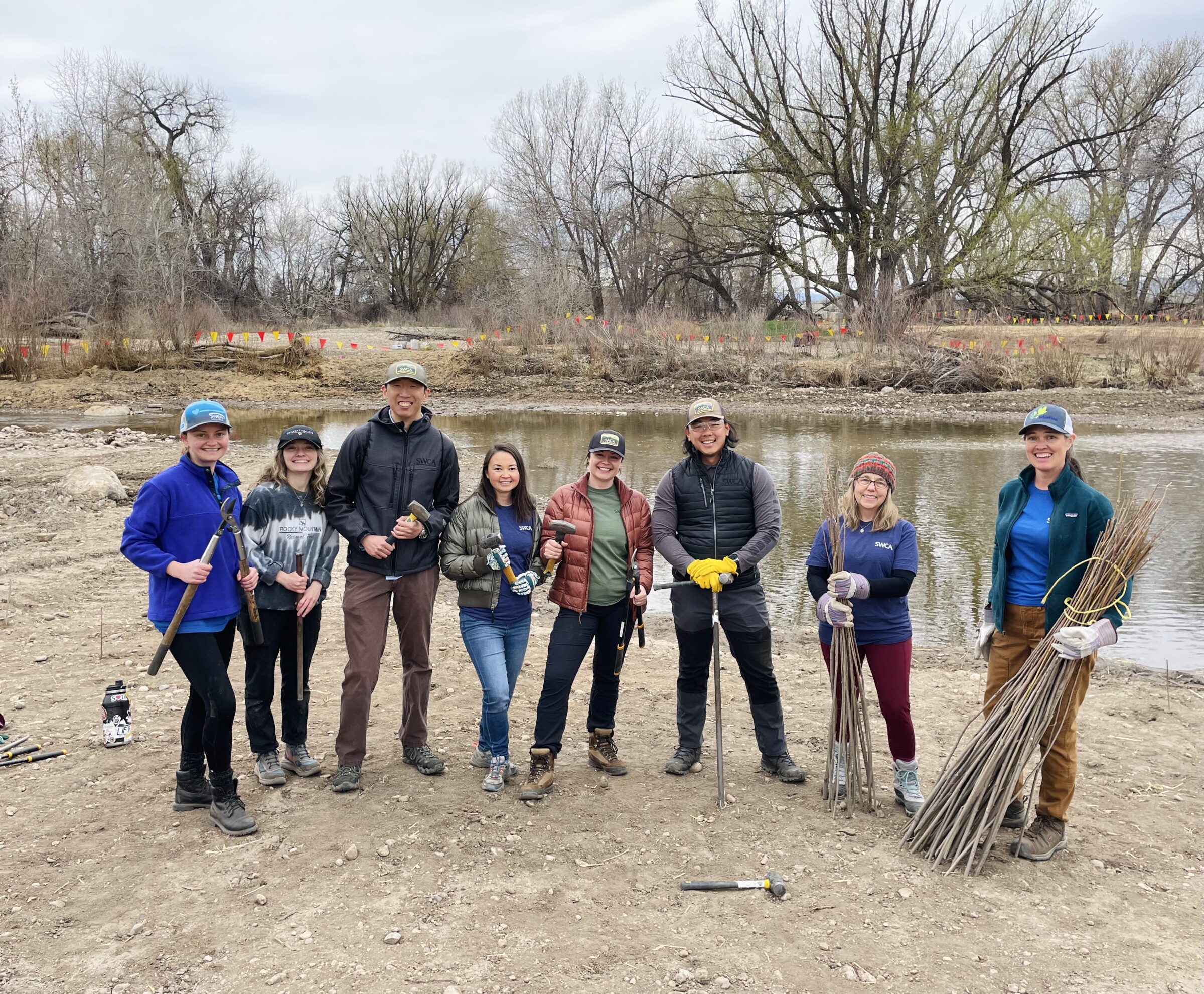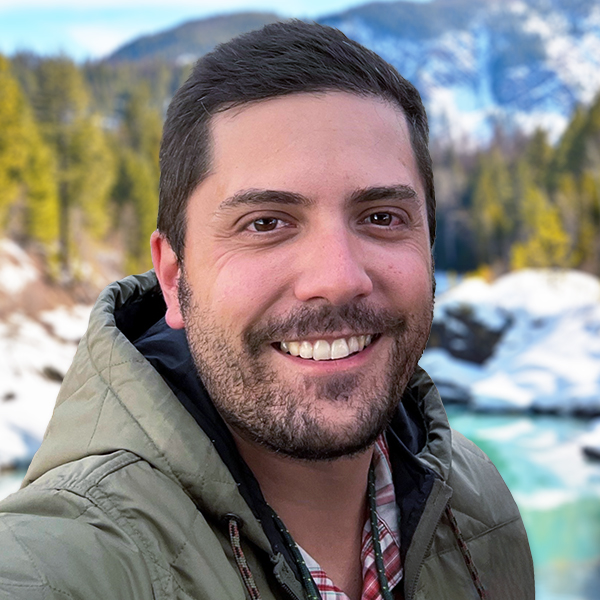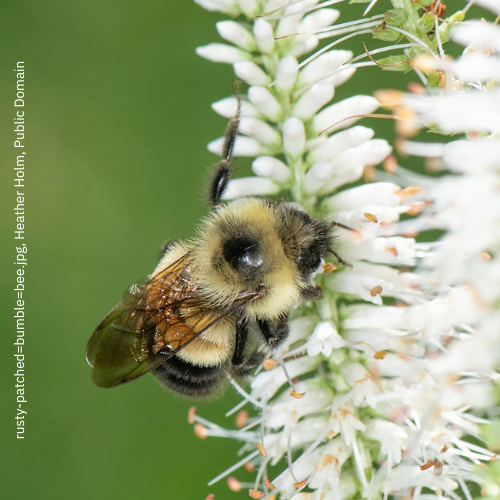2025
Comparably’s Best Company Outlook
* Providing engineering services in these locations through SWCA Environmental Consulting & Engineering, Inc., an affiliate of SWCA.

From the experts we hire, to the clients we partner with, our greatest opportunity for success lies in our ability to bring the best team together for every project.
That’s why:

At SWCA, sustainability means balancing humanity’s social, economic, and environmental needs to provide a healthy planet for future generations.

SWCA employs smart, talented, problem-solvers dedicated to our purpose of preserving natural and cultural resources for tomorrow while enabling projects that benefit people today.

At SWCA, you’re not just an employee. You’re an owner. Everyone you work with has a stake in your success, so your hard work pays off – for the clients, for the company, and for your retirement goals.
U.S. Fish and Wildlife Service Proposes Critical Habitat Designation for Endangered Rusty Patched Bumble Bee
The U.S. Fish and Wildlife Service (USFWS) has proposed designating 1,635,746 acres as critical habitat for the endangered rusty patched bumble bee (Bombus affinis).
Griffin has completed projects focused on power generation, transmission, oil and gas, Departments of Transportation, and residential and commercial land development throughout the Midwest and in central and western states. His work has recently been heavily focused on all facets of preconstruction renewable energy development in the wind and solar industries, including natural resources reporting, permitting, wetland delineation, ecological and threatened and endangered species assessments, and due diligence. As part of his work in renewable energy development, he has supported several Public Utilities Commission/Public Service Commission site permit applications for large-scale wind farms in Minnesota, North Dakota, South Dakota, and Iowa.

Kely Wabnitz is a biologist and principal project management team lead specializing in complex permitting issues, is an Endangered Species Act (ESA) regulatory practitioner, and has worked throughout the country, specifically the Midwest and Great Plains, for more than two decades. Kely has outstanding experience in ESA compliance and National Environmental Policy Act (NEPA) review documentation, a thorough knowledge of the biology and conservation of listed species in the Midwest, and extensive experience assisting clients with regulatory issues throughout the country. She routinely manages challenging compliance and permitting issues related to large-scale, regional, and multistate development projects. Kely has robust experience navigating related discussions, coordination, and consultations with the U.S. Fish and Wildlife Service (USFWS), specifically in Regions 2, 3, 5, and 6, and with state public siting commissions and natural resources agencies. She has worked with clients throughout the United States and has supported the successful acquisition of state and local siting permits through development of statutorily complete applications, preparation of written testimony requiring subject matter expertise, and support during public hearings.




The U.S. Fish and Wildlife Service (USFWS) has proposed designating 1,635,746 acres as critical habitat for the endangered rusty patched bumble bee (Bombus affinis). The proposed critical habitat spans 14 units across 33 counties in six states: Minnesota, Wisconsin, Iowa, Illinois, West Virginia, and Virginia.
The proposed critical habitat includes areas with physical and biological features considered important for the rusty patched bumble bees’ survival and recovery, including upland forest interiors for overwintering, upland forest edges for nesting, abandoned burrows for nesting, well-drained soils for nesting and overwintering, and diverse floral resources for foraging.
Critical habitats are protected areas that require an analysis of impacts under Section 7 of the Endangered Species Act (ESA) for projects involving federal actions. To determine if your project might be affected by the proposed critical habitat designation for the rusty patched bumble bee, the first step is to assess federal involvement. Federal involvement may include projects located on federally administered lands, projects receiving federal funding, or projects requiring federal permits.
Even if your project is located outside a designated critical habitat boundary, federal involvement can still trigger the need for consultation with the USFWS if the project could cause indirect affects to critical habitat. Projects without any federal involvement are not required to consider critical habitat under the ESA. However, your project may involve another regulatory process (such as obtaining a state siting permit) that compels consideration of critical habitat.
Federal agencies must ensure that activities within or affecting critical habitats do not cause destruction or adverse modification of that habitat. This requirement can impact a project by necessitating additional permits, approvals, studies, reports, or formal consultation with the USFWS, potentially increasing the project timeline and costs. In some cases, project designs may need to be modified to avoid impacting critical habitats. The physical and biological features outlined in the critical habitat rule (mentioned in the section above) play a role in these analyses and can influence project outcomes.
Details on the proposed critical habitat designation is available at: https://www.govinfo.gov/content/pkg/FR-2024-11-26/pdf/2024-27316.pdf.
The USFWS is accepting public comments on the proposed critical habitat designation through January 27, 2025. All comments can be submitted either electronically through the Federal eRulemaking Portal or by mail. Requests for public hearings should be directed to Betsy Galbraith at the USFWS Minnesota-Wisconsin Ecological Services Office prior to January 10, 2025.
Let us help you craft and submit your comments on the proposed critical habitat designation for the rusty patched bumble bee. Our team can assist with evaluating the sufficiency of data supporting the designation; reviewing the timeline for finalizing the designation; analyzing areas considered but excluded and the rationale behind those decisions; seeking exceptions to designations where applicable; and understanding how the designation may affect your ongoing or future activities.
Our experienced team is ready to guide you through the comment submission process and provide answers to your questions regarding the proposed critical habitat designation.